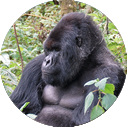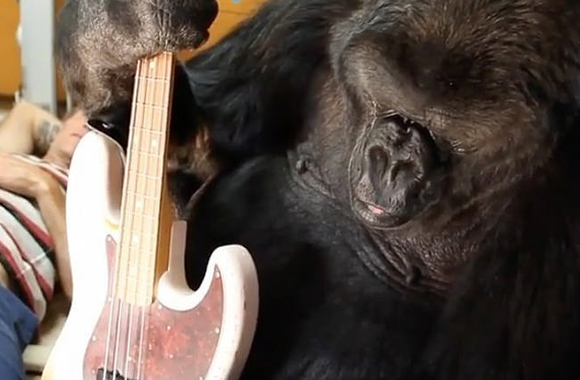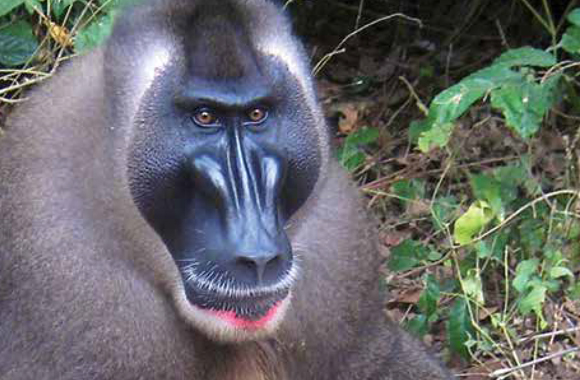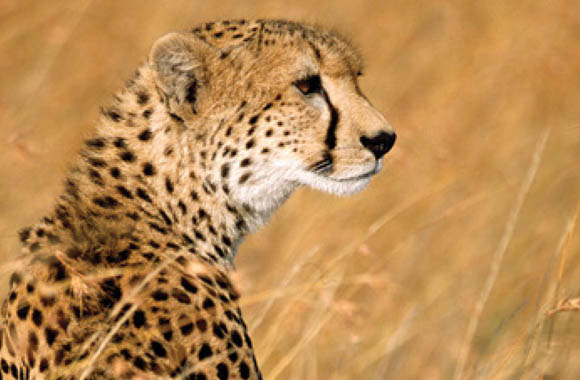Gorillas
The largest of the great apes, the gorilla is thought to have had a common ancestor with humans about 10 million years ago. Today, the gorilla shares approximately 98% of its DNA with humans.
A typical family group is composed of one dominant mature male – the “silverback” – and several adult females and their young. An average group size is about 5-10 individuals, although 50 or more is not unheard of.
Gorillas have a range of vocalizations for communication, such as grunts, whimpers, barks, whines, chuckles, and belches. The belch noise is a soft contact call used when individuals are out of visual contact, and excited gorillas may bark, hoot, roar, or scream. Male displays, which use a combination of these calls, also involve charging, strutting, and throwing vegetation. And, both male and female gorillas laugh when they play.
Sadly, gorillas are severely threatened by poaching for bushmeat, and their populations are also pressured by loss of habitat, disease, and capture for captivity. Gorillas have low reproduction rates, with females only giving birth every four to six years after a gestation period of eight to nine months. Declines in their numbers are therefore of conservation concern, as it can take a long time for populations to rebound.
Born Free has funded and supported the protection and conservation of gorillas in the wild for many years through projects in the Democratic Republic of Congo. We also campaign against the exploitation of gorillas in captivity.

Gorillas
Status
IUCN Red List classification:
Eastern gorilla – Critically Endangered
Western gorilla – Critically Endangered
CITES status: Both Eastern and Western gorilla – Appendix I
Endangered Species Act Status: Both Eastern and Western gorillas are Endangered
Population
Estimated number remaining in the wild:
Eastern gorilla – Fewer than 5,000 (as of 2007); could be as low as 3,800 (as of 2015)
Western gorilla – Approximately 100,000 to a few hundred thousand
Population decline of gorillas:
Eastern gorilla – Decreasing. In 1995, the population was estimated to be 16,900. As of 2015, there are thought to be only 3,800 left.
Western gorilla – Decreasing. In the mid-2000s, surveys indicated a population of 150,000-250,000. However, between 2005 and 2013, their numbers declined by 18.75% (2.56% per year).
Location
Eastern gorillas occur in the forest of eastern Democratic Republic of Congo, northwest Rwanda, and southwest Uganda.
Western gorillas are found in Angola, Cameroon, Central African Republic, Equatorial Guinea, Gabon, Nigeria, and Democratic Republic of Congo.
Size
Eastern gorilla – Males are typically 66 inches tall and weigh 309-453 pounds. Females are generally 57 inches tall and weigh 200-220 pounds.
Western gorilla – Wild males are around 61 inches tall and 321 pounds, and wild females are 53 inches tall. Captive males tend to weigh around 346 pounds and captive females are approximately 176 pounds.
Fun Fact
Gorillas have both identifying nose and finger prints. No two gorillas have the same nose and finger print.
As male gorillas reach the age of maturity, their skulls form a bony ridge, giving them their dome-shaped head.


